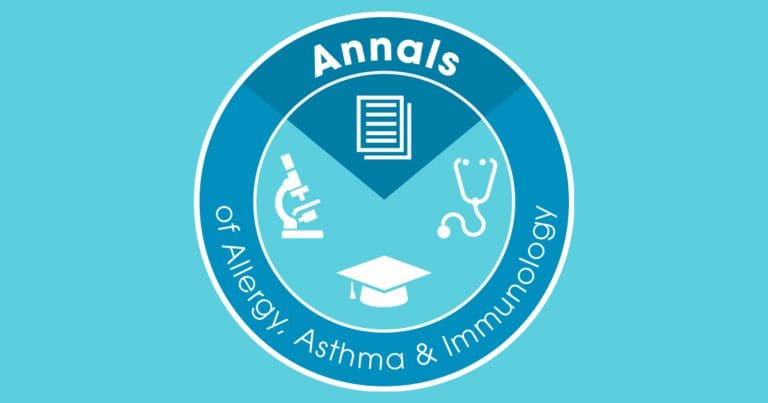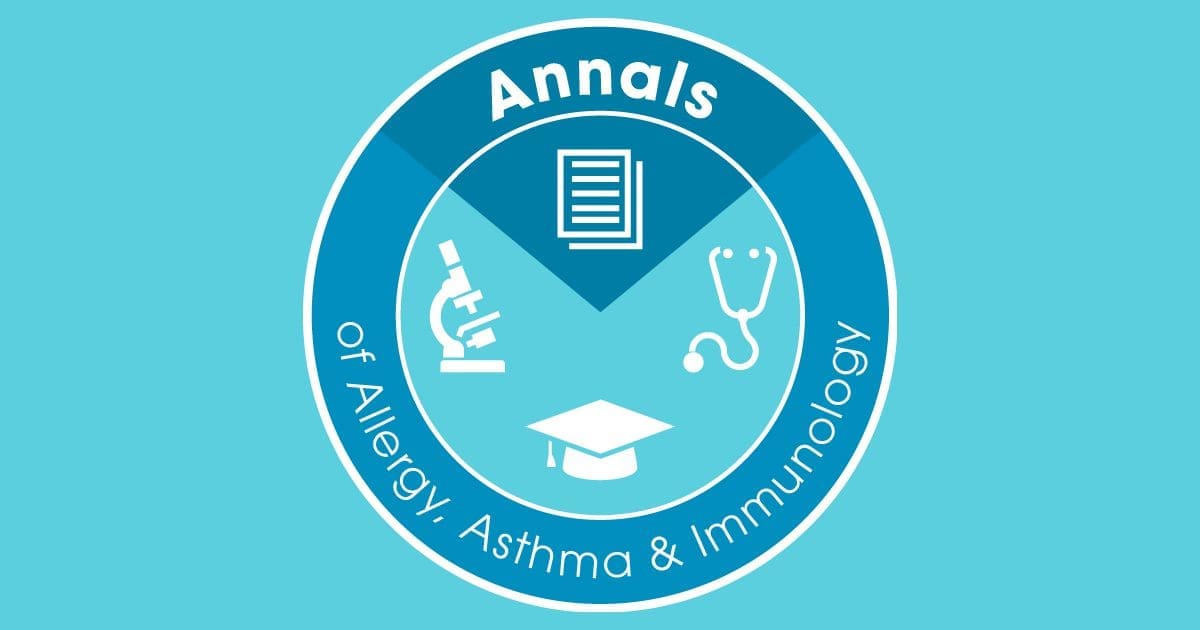It’s August, and as the kids are getting ready to go back to school, take some time to peruse this month’s Annals of Allergy, Asthma & Immunology. The focus is exploring options to prevent the development of allergic disease, and what the future may hold.
The CME review article this month investigates how strategies to improve the skin barrier function may prevent development of allergic diseases, such as atopic dermatitis and food allergy. An interesting editorial puts the data on allergen prevention into context in a short, easy-to-read way. And if you need a chuckle, the Marginal Zone has a special deal on the “Allergy Prevention Subscription Box.” I specifically like the “Shellfish Puffs.”
This month, there is a review and call to action examining the very limited amount of medical ethics research in our specialty. This really is a must read and highlights a research opportunity within our specialty. Keeping with the ethics theme, read the editorial that explores the implications of immunoglobulin replacement therapy during pregnancy. Other editorials examine the outcomes over the past five years of the American Board of Allergy and Immunology’s Continuous Assessment Program (CAP), as well as the pivotal role Congressman George Miller O’Brien played in establishing the Centers for Interdisciplinary Research on Immunologic Disease, which laid the groundwork for the NIH Inner-City Asthma Consortium and eventually the current Childhood Asthma in Urban Settings program.
Original articles this month explore many important topics. Asthma-related studies include one determining meaningful change in the Asthma Impairment and Risk Questionnaire, and the relationship of infant urinary adrenal steroids with asthma development. The use of fractional exhaled nitric oxide to evaluate response in allergic bronchopulmonary aspergillosis is presented, as well as a study looking at the microbiome over time in children with milk, egg, and peanut allergy. There are also two studies looking at epinephrine delivery – one on the use of intranasal epinephrine for congestion and the other explores how often epinephrine autoinjectors gave a subcutaneous or intraosseous injection rather than an intramuscular one.
The letters this month explore the use of an electronic monitoring device to evaluate the response to dupilumab, and the use of dupilumab to treat eosinophilic fasciitis. Drug hypersensitivity studies look at Amikacin and neomycin cross-reactivity, contact dermatitis from methylisothiazolinone containing paint, and pegaspargase chemotherapy desensitization reactions. There are also several letters related to food allergy, which examine FPIES in adults, why peanut lectin is not an allergen, and anaphylaxis to tiger nut milk. Finally, for all you educators out there, we have a study looking at the best ways to teach immunology to learners.
This is your last chance to nominate a Fellow-in-Training for the ACAAI Annals Fellow-in-Training award – the deadline is August 15. These cash awards honor the best research or review paper written by an FIT as first or senior award, and information can be found at Ann Allergy Asthma Immunol 2023;131(6):681-682. Send your nominations to Annals@ACAAI.org. And, as always, if you have any comments, please consider sending correspondence to Annals (email us at Annals@ACAAI.org). We are always excited to hear how Annals has helped you improve the lives of your patients!


